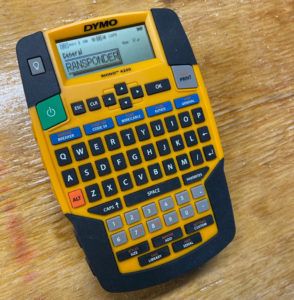 I’ve been accused of being interested in building and maintaining airplanes and motorcycles as cover for a bad case of tool want. From the outside it appears as want; inside my head, it’s need. In truth, my new favorite tool is probably a case of want over need but I’m going with it nevertheless.
I’ve been accused of being interested in building and maintaining airplanes and motorcycles as cover for a bad case of tool want. From the outside it appears as want; inside my head, it’s need. In truth, my new favorite tool is probably a case of want over need but I’m going with it nevertheless.
Behold the DYMO Rhino 4200 label maker. I can still feel my grandfather’s 1970s DYMO labeler in my hand, red plastic with the big wheel. Select the letter, pull the trigger—clack—and you have a letter. I may have spelled out my first cuss words on that device.
The Rhino is a long way from that, with its special trick the ability to print right onto heat-shrinkable sleeves. With the epic amount of avionics work I’ve done lately on my GlaStar, the Rhino has been a huge boon, helping me identify the various wire sets from the various electronic instruments and my newly installed Garmin GNX 375 GPS/transponder. Once you have a bundle of otherwise indistinguishable white wires inside the airplane, a bit of help know what is what can be huge.
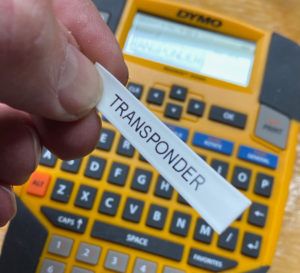 The Rhino accepts both traditional plastic labels as well as heat-shrink sleeves, in sizes from 1/4 inch up to 3/4 inch. Note, though, that the sleeve size represents the label as it is flat, not the ID. The upshot is that I found the 1/4-inch size perfect for one or two 22-gauge Tefzel wires, where the more common two-conductor shielded bundle (also 22-gauge) works well with the 3/8-inch size of heat shrink. I also used 3/8-inch on the outside of conventional RG-400 coax. Obviously, the larger the sleeve, the larger the printing can be. A 1/4-inch tube goes up to 12-point type whereas the 3/8-inch can show up to 18-point type.
The Rhino accepts both traditional plastic labels as well as heat-shrink sleeves, in sizes from 1/4 inch up to 3/4 inch. Note, though, that the sleeve size represents the label as it is flat, not the ID. The upshot is that I found the 1/4-inch size perfect for one or two 22-gauge Tefzel wires, where the more common two-conductor shielded bundle (also 22-gauge) works well with the 3/8-inch size of heat shrink. I also used 3/8-inch on the outside of conventional RG-400 coax. Obviously, the larger the sleeve, the larger the printing can be. A 1/4-inch tube goes up to 12-point type whereas the 3/8-inch can show up to 18-point type.
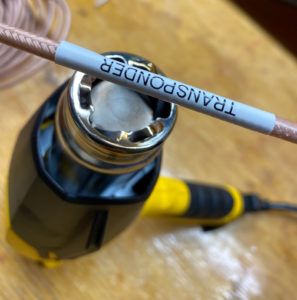 Overall, I’m really happy with the Rhino 4200’s performance. The QWERTY layout to the keyboard is intuitive to me, and I have not had the same complaints of commercial users who lament the missing underscore and ampersand characters. Printing onto the shrink sleeves has been very good overall, with only the occasional cartridge jam; usually it came when I was a little too casual inserting a new cartridge. I can’t say the same for the basic labels, which tend to have a faint line straight across the text. This is probably because the removable backing has a score to make it easier to remove. (I have a cheap labeler in the shop that does not have that score, and I’ve probably lost a year of my life trying to get the backing off those labels. Never again!)
Overall, I’m really happy with the Rhino 4200’s performance. The QWERTY layout to the keyboard is intuitive to me, and I have not had the same complaints of commercial users who lament the missing underscore and ampersand characters. Printing onto the shrink sleeves has been very good overall, with only the occasional cartridge jam; usually it came when I was a little too casual inserting a new cartridge. I can’t say the same for the basic labels, which tend to have a faint line straight across the text. This is probably because the removable backing has a score to make it easier to remove. (I have a cheap labeler in the shop that does not have that score, and I’ve probably lost a year of my life trying to get the backing off those labels. Never again!)
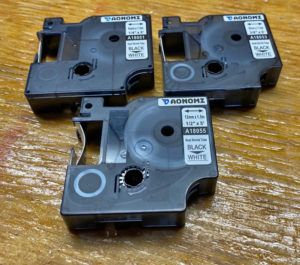 The Rhino isn’t cheap. MSRP is $79.99 without batteries or any labels. Amazon has it for a lot less. Upon the advice of fellow builders, I opted for non-DYMO “compatible” print cartridges and have no regrets. Prices vary depending on size, but four 1/4-inch spools with 5 feet of shrink tubing run about $20. You can get three 3/4-inch sizes for about $18. There may be other colors but the most common I see are black type on white tube or black on yellow.
The Rhino isn’t cheap. MSRP is $79.99 without batteries or any labels. Amazon has it for a lot less. Upon the advice of fellow builders, I opted for non-DYMO “compatible” print cartridges and have no regrets. Prices vary depending on size, but four 1/4-inch spools with 5 feet of shrink tubing run about $20. You can get three 3/4-inch sizes for about $18. There may be other colors but the most common I see are black type on white tube or black on yellow.
It’s fair to note that you can do the same job for less with simple paper labels printed on your computer and sealed with clear shrink tubing. I’ve done that, too, and soon chafed at the multi-step process that required. I’m hooked on the speed and convenience of the Rhino 4200.

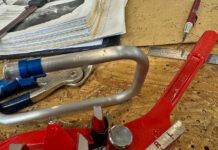
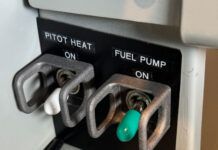
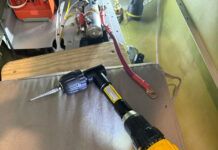
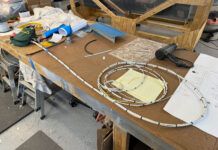


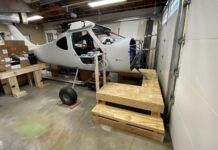
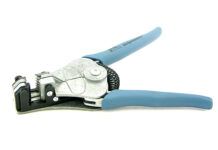

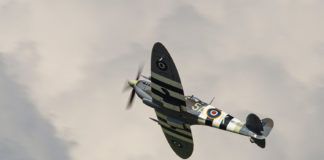
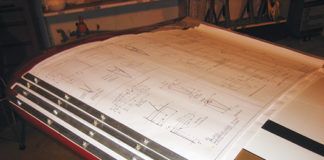
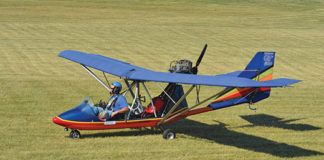

I bought one of those awhile ago. I’m surprised at the number of uses I find for it.
I have the smaller version. Also prints on heat shrink. It’s fantastic. There are labels on wires that clearly would not need to be labeled. Even the stock rolls get labeled with wire gauge to make for quick and easy identification.
Mine just arrived yesterday. I’m determined to make my electrical work at least look professional.
I used a Rhino extensively in my last. build and know it will pay huge dividends later on troubleshooting if needed.
No affiliation with the company but just FYI the Epson series of similar label printers can print smaller diameter shrink tube – down to 1/8″ which is suitable for around 22 AWG wires. And up to 7/8″ depending on the printer. I have the LW-PX350 which can print on 1/8″ to 1/2″ tubing.
IMHO the 1/4″ minimum size mentioned in the article is pretty wide for some of the avionics wiring. Just something else to investigate.
You write about the difficulties in getting the backing of labels that are not scored.
I use Scotch tape to separate the backing from the label.
Put a piece of tape on the front of the label right at the edge, then put a piece of tape
on the backing overlapping the corner but not the other tape and you can separate the backing from the label by peeling the backing of the label with the tape acting as a handle.